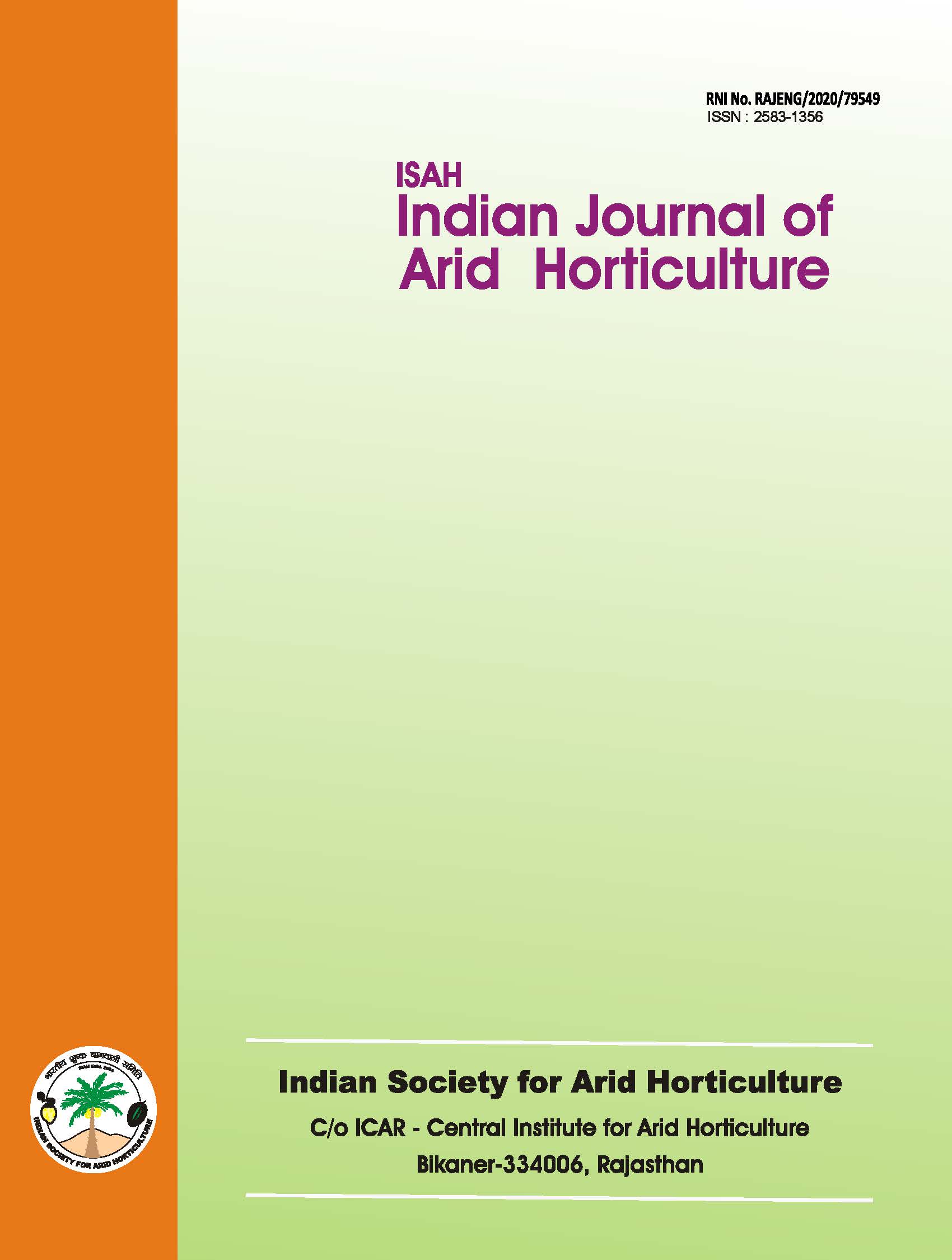Ascorbic acid loss, microbial spoilage and sensory changes in aonla juice during storage
Keywords:
Ascorbic acid, aonla, juice-, pasteurization, storage, sulphitationAbstract
Being acidic and astringent in taste and perishable in nature the potential of aonla for preparation of vitamin C rich beverages has been explored on. In present endeavor attempt was made to study the effect of pasteurization, sulphitation in combination with different storage conditions so as to draw inference as to how long the quality of aonla juice stands intact. Sulphitation (350 ppm SO,) of aonla juice coupled with storage at low temperature minimized the loss of vitamin 'C' and produce best sensory quality even after six months of storage. Pasteurization and sulphitation both inhibited the yeast growth throughout the storage period and thus helped extend the storability of aonla juice. Key words: Ascorbic acid, aonla, juice, pasteurization, storage, sulphitationDownloads
References
Amerine, M.A., Pangborn, R.M. and Roessler, E.B. 1965. Principles of Sensory Evaluation of Food. Academic Press, New York, USA.
Anonymous, 1998. Can juices replace tea or coffee on breakfast table. Processed Food, 1(5): 36-37.
Bansal, M. and Dhawan, S.S. 1993. Preservation and keeping quality of Bhadri lemon (Citrus limon L. Brum) juice. Haryana Journal of Horticulture Science, 22(3): 188-194.
Barthakur, N.N. and Arnold, N.P. 1991. Chemical analysis of the emblic (Phyllanthus emblica L.) and its potential as a food source. Scientia Horticulturae, 47: 99-105.
Deka, B.C. 2000. Preparation and storage of mixed fruit juice spiced beverages. Ph.D. Thesis, IARI, New Delhi.
Granzer, R. 1983. Storage effects of light on ascorbic acid and carotenoid contents and on sensory quality of orange juice in colourless bottles. Industrielle Obst- und Gemmiseverwertung, 68(7): 263-266.
Jain, S.K., Khurdiya, D.S. 2004. Vitamin C enrichment of fruit juice-based ready-to-serve beverages through blending of Indian gooseberry (Emblica officinalis Gaertn.) juice. Plant Food for Human Nutrition, 59(2): 63-66.
Jain, Shashi Kumar and Khurdiya, D.S. 2002. Studies on juice extraction of aonla (Emblica officinalis Gaertn.) cv. Chakaiya. Journal of Food Science and Technology, 39(5): 515-516.
Kalra, S.K. and Revathi, G. 1981. Storage studies on guava (Psidium guajava L.) pulp. Indian Food Packer, 35(6): 29-33.
Khurdiya, D.S., Srivastava, S. and Jindal, P.C. 1995. Processing of teinturier grape hybrids for juice. Indian Food Packer, 49(5): 13-16.
Mehta, U. and Rathore, S. 1976. Storage studies of pressed juice from amla (Phyllanthus emblica). Indian Food Packer, 30(1): 9-12.
Nath, V. 1999. Delicacies of aonla. Indian Horticulture, 44(3): 15-16.
Panes, V.G. and Sukhatme, P.V. 1989. Statistical Methods for Agricultural Workers. Publication and Information Division, ICAR, New Delhi.
Ranganna, S. 1997. Handbook of Analysis and Quality Control for Fruit and Vegetable Products. 2nd Edition. Tata McGraw-Hill Publishing Company Ltd., New Delhi.
Ranote, P.S. and Bains, G.S. 1982. Juice of kinnow fruit. Indian Food Packer, 36(5): 23-33.
Singh, I.S. and Kumar, S. 1995. Studies on processing of aonla fruits II. Aonla Products. Progressive Horticulture, 27(1-2): 39-47.
Tripathi, V.K., Singh, M.B. and Singh, S. 1988. Studies on comparative compositional changes in different preserved products of aonla (Emblica officinalis Gaertn.) var. Banarasi. Indian Food Packer, 42(4): 60-66.

